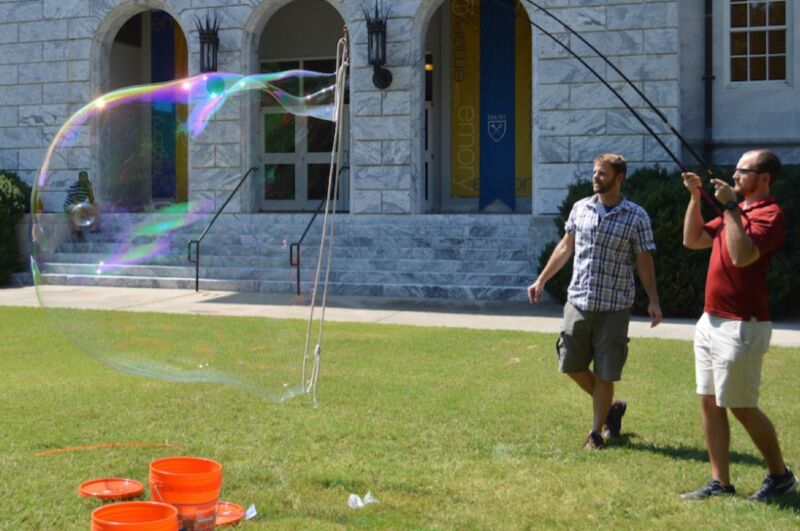Physicists determine the optimal soap recipe for blowing gigantic bubbles

Enlarge / Physicist Justin Burton (left) experiments with giant soap bubbles on Emory University's Quad with graduate student Stephen Frazier. (credit: Burton Lab/Emory University)
Everybody loves bubbles, regardless of age-the bigger the better. But to blow really big, world-record-scale bubbles requires a very precise bubble mixture. Physicists have determined that a key ingredient is mixing in polymers of varying strand lengths, according to a new paper in Physical Review Fluids. That produces a soap film able to stretch sufficiently thin to make a giant bubble without breaking.
Bubbles may seem frivolous, but there is some complex underlying physics, and hence their study has long been serious science. In the 1800s, Belgian physicist Joseph Plateau outlined four basic laws of surface tension that determine the structure of soapy films. Surface tension is why bubbles are round; that shape has the least surface area for a given volume, so it requires the least energy to maintain. Over time, that shape will start to look more like a soccer ball than a perfect sphere as gravity pulls the liquid downward ("coarsening").
Bubbles and foams remain an active area of research. For instance, in 2016, French physicists worked out a theoretical model for the exact mechanism for how soap bubbles form when jets of air hit a soapy film. They found that bubbles only formed above a certain speed, which in turn depends on the width of the jet of air. If the jet is wide, there will be a lower threshold for forming bubbles, and those bubbles will be larger than ones produced by narrower jets, which have higher speed thresholds. That's what's happening, physics-wise, when we blow bubbles through a little plastic wand: the jet forms at our lips and is wider than the soapy film suspended within the wand.
Read 11 remaining paragraphs | Comments